Community Building: A TESOL Teacher of the Year Lesson Plan
by Sherry Blok
Discover, Dream, and Design: Creating a Positive Learning Environment
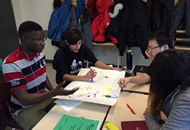 Even as a seasoned teacher, I still get butterflies in my stomach when starting a new school year. Maybe these feelings stem from my experience as a student—feeling the waters of a new classroom environment, new peers, and a new teacher. My own anxiety helps me empathize with what my students might be feeling at the beginning of a school year as they may be transitioning into studying in a second language in a new environment.
Even as a seasoned teacher, I still get butterflies in my stomach when starting a new school year. Maybe these feelings stem from my experience as a student—feeling the waters of a new classroom environment, new peers, and a new teacher. My own anxiety helps me empathize with what my students might be feeling at the beginning of a school year as they may be transitioning into studying in a second language in a new environment.
In this lesson plan, I present a community building activity drawn from appreciative pedagogy and positive psychology, which draws on former positive learning experiences to create a positive learning environment. The “Discover, Dream, and Design” activity (Reilly, 2013) can create a positive learning environment.
This activity is based on the approach of appreciative inquiry and how transformative life-based, generative learning can impact workplace and classroom culture (Harrison & Hasan, 2013). Positive learning experiences create a positive learning environment for faculty and students to thrive as it fosters a spirit of openness, reflection, and success (Yballe & O’Connor, 2000). Appreciative inquiry delves to the core of what works best and what inspires us, and it pushes us to design a collective vision to foster change rather than to focus on deficits.
| Materials: poster boards, coloured markers, desks |
| Audience: Intermediate to advanced learners at all ages. Teachers and school staff. |
| Objectives:Drawing from positive past learning experiences, participants will learn how to establish a shared vision of an ideal learning community by communicating values which foster individual and collective positive learning outcomes. |
| Outcome: Participants will collectively design a pictogram to represent their ideal learning environment. |
| Duration: 2 hours |
Preparation
Arrange desks together to form large tables so that there is enough space for the poster board in the middle of the table; participants will sit around the poster board.
Warm-Up
-
Organize students into groups of four.
-
Prepare students by telling them:
-
They are going to work in teams, and that the activity will include several steps and last about 2 hours.
-
They are going to be sharing stories with their teams that call on past experiences as students (or teachers), and they will share what made their experience positive. These experiences can be from school, but also other experiences as students in extra-curricular activities such as dance class, piano lessons, or summer camp.
-
Model this step by sharing a personal example. I begin with a story of one of my favourite teachers back in high school and explain how he helped me transition from being a shy kid who was deathly afraid of public speaking to becoming a university teacher today. Mr. Mckerral was my drama teacher, and he had an amazing way to make every student feel valued. He fostered creativity and student empowerment, and, with his support and the support of my peers, I became more confident, more of a risk–taker, and a more active participant in my school and community.
|
Sharing our own story with the students is a way to show glimpses from of our personal journeys. This helps form a student-teacher relationship and teaches students they are on a path to becoming their true selves to realize their full potential. |
Activity
Step 1: Discover
In this step, participants reflect on peak moments from past and current experiences as students (or teachers) and explore the feelings and actions associated with that experience. (30 minutes)
-
Divide each group of four into pairs. Tell the participants they will regroup later.
-
In pairs, instruct the participants to take turns telling a story that describes a peak experience in education they had when they felt engaged and energized. Have them:
-
Describe what was best about that experience.
-
Describe what was happening around them.
-
Jot down a few ideas for each of the above to share with the other pair.
-
Regroup the groups of four and have them briefly share their stories and what made those experiences so memorable.
Step 2: Dream
In this step, participants begin with envisioning an ideal learning environment utilizing their highlights or golden moments. (20 minutes)
Step 3: Design
In this step, participants brainstorm strategies to achieve a common vision. Participants decide on which highlights they would like to see embodied in their school, and design a pictogram to illustrate their collective vision. (60 minutes)
-
Ask the students to brainstorm a list of their favourite highlights, and have them select the best three.
-
Provide each group with a piece of poster board and markers. Using imaging, participants create a pictogram that illustrates their collective vision of their best three highlights. They may include words, but tell them they will be able to explain their pictograms to the class later.
-
Encourage participants to be creative in their pictogram and make it as colourful as possible.
-
Encourage everyone to participate, as this is a shared vision.
-
After each pictogram is complete, ask each group to elect one person to present the pictogram to the class.
-
Students ask and answer questions about the pictograms.
-
Display the pictograms in the classroom.
In my experience, adult learners tend to take a lot of time discussing the layout of the pictogram and may even design a draft before beginning on the poster board. This step may require much negotiation. Encourage everyone’s participation—they don’t require excellent drawing skills to participate.
Here are a few student examples:
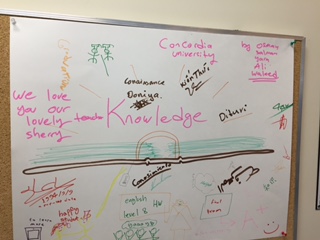
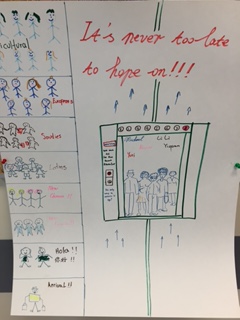
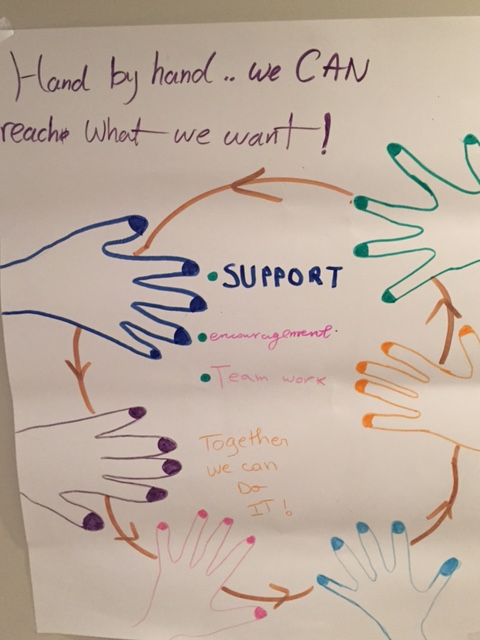
See more student pictograms here (PDF).
Post Activity/Assignment
Step 4: Dare
In this step, participants follow up on an implementation plan to take a proactive step in the right direction. In a follow-up homework assignment, I ask the students to free write one to two pages on the following questions: (10 minutes)
-
How will you try to incorporate these highlights into your learning this semester?
-
What are the consequences of you having a more fulfilling learning experience this year or semester?
-
How can your success in school transfer into other aspects of your life?
Lasting Effects
Step 5: Deliver
Focusing more on the positive and less on the negative can help transform your classroom into a community where everyone feels valued. If students feel the support of their teachers and peers, they just might:
-
Show greater confidence
-
Participate more and take more risks in learning
-
Show a more positive attitude toward others
-
Improve attendance
-
Take on greater commitment to learning and meaningful work
-
Be more positive toward learning and the future
|
Practice what you preach!
If you implement appreciative inquiry in your class, be mindful each time you give feedback (whether written or oral). It’s all in the message. Instead of focusing on the mistakes, use the opportunity for feedback to give students positive messages on what they do well and direction on how to improve in areas of weakness. There is nothing more discouraging to a student than to feel helpless and intimidated when he or she wants to ask for help. |
Tips for Positive, Lasting Results
-
Take pictures of the students at different stages of the activity and a picture of their final product. Put the images together in a PowerPoint file and upload it to your course management system. This allows them to have a keepsake of the activity and their shared vision.
-
Keep the posters on display in your class for the period of the semester. Refer to the posters often, during different classroom building exercises or discussions. The posters serve as a reminder to your shared vision of an ideal learning environment.
-
Share, share, share! Share this activity with your colleagues to infuse appreciative pedagogy in your school. Better yet, plan this activity for one of your first faculty professional development activities to start off the year on a positive note!
I first experienced this activity as a workshop participant on appreciative pedagogy given by Rosemary Reilly at Concordia University in Montreal, Canada. This lesson plan is an adaptation of her initiative presentation except for the framework of the 5 D’s. Rosemary’s work is inspirational to me.
References
Harrison, L. M., & Hasan, S. (2013).What's right with learning today: Appreciative inquiry and positive outcomes in higher education. New Directions for Student Services, 143, 65–75. San Francisco, CA: Jossey-Bass.
Preziosi, R. C., & Gooden, D. J. (2002). Using appreciative learning in executive education. New Horizons in Adult Education. Retrieved from http://education.fiu.edu/newhorizons/journals/volume16no1.pdf
Reilly, R. (2013, February). Appreciative pedagogy. Workshop presented at Concordia University Teaching and Learning Winter Festival, Montreal, Canada.
Yballe, L., & O’Connor, D. (2000). Appreciative pedagogy: Constructing positive models for learning. Journal of Management Education, 24, 474–483.
__________________
Sherry Blok is TESOL’s 2015 recipient of the Teacher of the Year award. She holds a Master’s degree in Second Language Education from McGill University and has over 18 years of experience as an ESL lecturer in the Intensive English Program at Concordia University in Montreal, Canada. Her interests are English for Academic Purposes, Curriculum Design, Global Citizenship and Assessment. She is the Professional Development Consultant for Continuing Education and organizes and delivers workshops related to best practices in teaching and in ESL. She was named the 2013 official spokesperson for university lecturers for the Fédération nationale des enseignantes et enseignants du Québec (FNEEQ).
TESOL Blogs
Interested in writing a blog for TESOL?
Contact
Tomiko Breland with your idea or for submission details.
Check out the latest TESOL Blogs:
|
Critical Thinking About Technology: An ELT Activity, by Alexandra Lowe
 Our world is awash in new technology. New electronic gadgets, new smartphone apps, and new forms of social media abound. But which of these will stand the test of time? And how do these dazzling technology innovations compare in significance to those of the past? Our world is awash in new technology. New electronic gadgets, new smartphone apps, and new forms of social media abound. But which of these will stand the test of time? And how do these dazzling technology innovations compare in significance to those of the past?
This was the critical thinking and speaking task that I recently asked my advanced adult ELLs to tackle as a prelude to watching a series of TED Talks and YouTube videos about technological innovations ranging from 3D printing to a windmill build from scrap materials by a 14-year old in Malawi. Read More. |
|
5 Icebreakers for English Interaction, by Kristen Lindahl
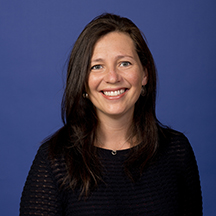 In the United States, it’s that time of year again, when students and teachers excitedly (reluctantly?) return to the classroom after summer vacation. First and foremost, you’ll want to get your students talking to you and to each other! In the United States, it’s that time of year again, when students and teachers excitedly (reluctantly?) return to the classroom after summer vacation. First and foremost, you’ll want to get your students talking to you and to each other!
In the language classroom, interaction provides many benefits. First, interaction may give students the chance to provide each other with comprehensible input, or input that is slightly above the learner’s current level of language acquisition. Slower, simplified speech, repeated vocabulary, and a chance to negotiate meaning may help students better understand English in use. Read More. |
|
5 Ways To Jumpstart Your ELL Class This Year, by Nathan Hall
 Two months ago, we were wrapping up postservice training. Now we’ve either started our preservice training or are counting down our remaining days of vacation. That means we have to get our classrooms ready for new students, and when our students are English language learners, there are some specific things we can do to make the first few months easier for us and for them. Read More. Two months ago, we were wrapping up postservice training. Now we’ve either started our preservice training or are counting down our remaining days of vacation. That means we have to get our classrooms ready for new students, and when our students are English language learners, there are some specific things we can do to make the first few months easier for us and for them. Read More.
|
|
5 Back-to-School Activities Supporting Student Diversity, by Judie Haynes
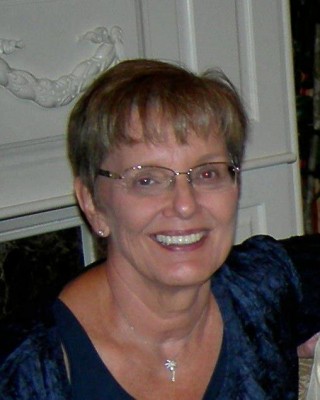 In a previous blog, Creating a Welcoming Classroom Environment for Pre-K-5 ELs, I wrote about how teachers can alleviate many fears experienced by English learners (ELs) who are new to the United States by creating a welcoming environment in their classrooms. A nurturing teacher and friendly classmates can greatly help ELs cope with the hurdles they face. In a previous blog, Creating a Welcoming Classroom Environment for Pre-K-5 ELs, I wrote about how teachers can alleviate many fears experienced by English learners (ELs) who are new to the United States by creating a welcoming environment in their classrooms. A nurturing teacher and friendly classmates can greatly help ELs cope with the hurdles they face.
In this blog, I’d like to discuss how to link instruction during the first week of school to ELs’ home language and culture. When ELs see their home cultures and languages being studied in the classroom, their culture is validated, and that helps to develop positive self- esteem. Here are five activities for ELLs during the 1st week of school. Read More. |